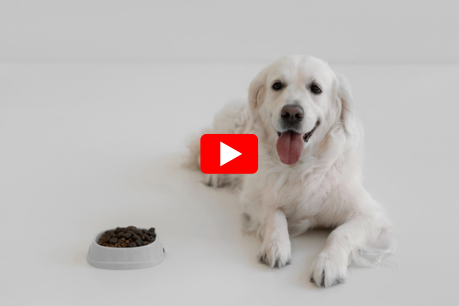Can Cats Eat Chocolate: Dangers, Symptoms & What to Do!
As a loving cat owner, you probably enjoy spoiling your feline friend with treats. But when it comes to human snacks like chocolate, it’s important to know which ones can harm your pet.
While dogs are famously sensitive to chocolate, many people don’t realize that it’s equally, if not more, dangerous for cats. So — can cats eat chocolate? The short, firm answer is no.
No, cats should never eat chocolate. It contains theobromine and caffeine, both toxic to cats, leading to serious health risks and possible death.
In this article, we’ll explore in detail why chocolate is toxic to cats, the harmful compounds it contains, the symptoms of chocolate poisoning in cats, what to do if your cat accidentally eats chocolate, and how to keep your curious kitty safe.
Why Is Chocolate Dangerous for Cats?
Chocolate contains two primary substances that are toxic to cats: theobromine and caffeine. Both belong to a group of chemicals called methylxanthines, which affect the central nervous system and cardiovascular system of animals.
While humans can metabolize these compounds easily, cats (and dogs) process them much more slowly. This slow metabolism allows toxic levels to build up quickly, potentially leading to dangerous and even fatal outcomes.
The Harmful Compounds in Chocolate
Theobromine
Theobromine is the main culprit in chocolate toxicity. It affects a cat’s central nervous system, heart, and muscles. Even small amounts can cause adverse reactions in felines, as they lack the necessary enzymes to efficiently metabolize theobromine.
Toxic Dose of Theobromine for Cats: As little as 20 mg per pound of body weight can cause poisoning, and amounts above 100 mg per pound can be fatal.
Caffeine
Caffeine is another methylxanthine present in chocolate. It acts as a stimulant, increasing heart rate and causing restlessness, tremors, and even seizures in cats.
Toxic Dose of Caffeine for Cats: Symptoms can appear with doses as low as 15–20 mg per pound.
Types of Chocolate and Their Toxicity Levels
Not all chocolates are created equal. Some varieties contain higher concentrations of theobromine and caffeine than others:
| Type of Chocolate | Theobromine (mg/oz) | Toxicity Risk |
|---|---|---|
| Cocoa Powder | 800 | Extremely High |
| Unsweetened Baking Chocolate | 450–500 | Very High |
| Dark Chocolate | 150–200 | High |
| Milk Chocolate | 50–60 | Moderate |
| White Chocolate | 0.1 | Low |
Symptoms of Chocolate Poisoning in Cats
Chocolate toxicity symptoms in cats can appear within 2 to 12 hours after ingestion and may last up to 72 hours, depending on the severity.
Common signs include:
-
Vomiting
-
Rapid breathing
-
Increased heart rate
-
Hyperactivity
-
Muscle tremors
-
Restlessness
-
Weakness
-
Elevated body temperature
-
Seizures
-
Coma (in severe cases)
How Much Chocolate Is Dangerous for Cats?
Even a small amount can be risky. Given the small size of most cats, it doesn’t take much theobromine to reach toxic levels.
For example:
-
A cat weighing 8 pounds (3.6 kg) would only need to ingest around 160 mg of theobromine for a potentially fatal dose.
Since a single ounce of dark chocolate contains around 150–200 mg of theobromine, even a bite could be dangerous.
What Should You Do If Your Cat Eats Chocolate?
If you suspect your cat has eaten chocolate, act immediately:
Check the Type and Quantity: Identify how much and what kind of chocolate your cat consumed.
Call Your Veterinarian: Provide details like your cat’s weight, the type of chocolate, and how much was ingested.
Contact a Pet Poison Helpline: You can call services like the ASPCA Animal Poison Control Center (888-426-4435) or the Pet Poison Helpline (855-764-7661) for guidance.
Monitor for Symptoms: Watch for signs like vomiting, diarrhea, or hyperactivity, and report them to your vet.
Do Not Induce Vomiting Without Veterinary Advice: Unlike dogs, inducing vomiting in cats is complicated and should only be done under a vet’s supervision.
Treatment for Chocolate Poisoning in Cats
If your cat has consumed a dangerous amount of chocolate, your veterinarian may:
-
Induce Vomiting: To remove any remaining chocolate from the stomach.
-
Administer Activated Charcoal: To prevent further absorption of toxins.
-
Provide IV Fluids: To help flush out the toxins and stabilize heart rate.
-
Use Anti-seizure or Anti-arrhythmia Medications: If necessary.
-
Offer Supportive Care: Including oxygen therapy and temperature regulation.
Prompt treatment is crucial — the earlier you act, the better the chances for recovery.
Can Cats Be Attracted to Chocolate?
Interestingly, cats lack the taste receptors for sweetness. This means they’re generally less drawn to sugary foods like chocolate compared to dogs. However, the texture and smell might intrigue some cats, especially in the case of milk chocolate or chocolate-covered treats.
Additionally, cats are curious creatures and may nibble on anything they can reach, which makes accidental ingestion a real risk.
How to Prevent Chocolate Poisoning in Cats
To keep your feline safe:
-
Store chocolate securely out of your cat’s reach.
-
Avoid leaving chocolates unattended on tables, counters, or in handbags.
-
Educate family members and guests about the dangers of chocolate to pets.
-
Use pet-safe treats specifically designed for cats when you want to spoil them.
-
Dispose of wrappers properly, as they can retain tempting smells.
Are There Any Safe Alternatives?
Yes! If you want to treat your kitty, opt for:
-
Catnip toys
-
Commercial cat treats
-
Cooked, unseasoned chicken or turkey pieces
-
Small bits of plain, cooked fish
Always introduce new treats slowly and in moderation.
Final Thoughts
To answer the big question: Can cats eat chocolate? Absolutely not. Chocolate contains theobromine and caffeine, both of which are extremely toxic to cats. Even small amounts can cause serious health complications and, in severe cases, be fatal.
As a responsible pet owner, keep all chocolate products well out of your cat’s reach, educate those around you about the dangers, and act swiftly if an accident occurs. Your cat’s health and safety are always worth protecting.
References Link
https://www.aspca.org/pet-care/animal-poison-control



